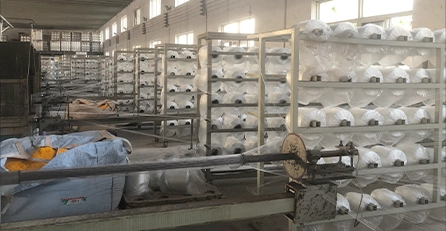vacuum hose
Understanding the Importance of Vacuum Hoses in Automotive Systems
When it comes to understanding the intricate workings of automotive systems, many components play crucial roles, but few are as overlooked as vacuum hoses. These flexible tubes may not be the most glamorous parts of a vehicle, but they are essential for several functions that impact engine performance, emissions control, and overall vehicle efficiency.
What Are Vacuum Hoses?
Vacuum hoses are tubes designed to carry the vacuum generated by the engine. They are typically made from rubber or silicone, materials chosen for their flexibility and resistance to temperature changes and chemical exposure. Vacuum hoses connect various components of the engine, transferring vacuum pressure to systems that require it for operation.
The Role of Vacuum Hoses
The primary role of vacuum hoses is to facilitate the operation of numerous devices in the engine. Here are some crucial systems and components that rely on these hoses
1. Brake Booster One of the most critical uses of vacuum hoses is in the brake booster system. This component amplifies the force that the driver applies to the brake pedal, making it easier to stop the vehicle. A vacuum hose connects the brake booster to the engine's intake manifold, allowing the engine’s vacuum to assist in applying the brakes.
2. Emission Control Systems Many vehicles are equipped with complex emission control systems designed to reduce harmful pollutants. These systems, such as the Positive Crankcase Ventilation (PCV) and the Evaporative Emission Control (EVAP) system, rely on vacuum hoses to manage gases and vapors, ensuring that they are reintroduced to the engine for combustion rather than released into the atmosphere.
3. Fuel Pressure Regulators Some fuel systems utilize vacuum hoses to regulate fuel pressure. By connecting the fuel pressure regulator to the intake manifold, the regulator can adjust fuel pressure based on the demand of the engine, improving efficiency and performance.
4. Heater and Air Conditioning Systems Modern vehicles often feature climate control systems that utilize vacuum hoses to operate blend doors and other components. These hoses help direct airflow and temperature control, ensuring passenger comfort.
vacuum hose

Common Issues with Vacuum Hoses
Despite their importance, vacuum hoses can suffer from wear and tear over time. Here are some common issues
- Cracks and Leaks Exposure to heat and engine fluids can degrade vacuum hoses, leading to cracks or holes. Even a small leak can reduce vacuum pressure, causing various performance issues and increasing emissions.
- Disconnections Over time, vacuum hoses can become loose or disconnected due to engine vibrations or improper installation. This disconnection can lead to a loss of vacuum in critical systems.
- Contamination Oil or coolant leaks can contaminate vacuum hoses, compromising their integrity and functionality. Regular inspection can identify and rectify these issues before they lead to more significant problems.
Maintenance and Replacement
Maintaining vacuum hoses is crucial for optimal vehicle performance. Vehicle owners should have their hoses inspected regularly, especially during routine maintenance services. Signs of wear, such as brittle surfaces, visible cracks, or any signs of oil or fuel contamination, indicate that a hose should be replaced.
Replacing vacuum hoses is generally straightforward and can often be done by a skilled DIYer. However, if you’re uncertain about the condition of your hoses or how to replace them, consulting a professional mechanic is advisable. A well-maintained vacuum hose system contributes significantly to engine health, fuel efficiency, and vehicle emissions.
Conclusion
In conclusion, vacuum hoses are an essential yet overlooked component of automotive systems. They play critical roles in braking, emissions control, fuel regulation, and climate control. Understanding their function and maintaining their condition can help ensure a smoother and more efficient driving experience. As with many parts of a vehicle, a little attention to vacuum hoses can go a long way in preventing larger, more costly issues down the road. Regular inspections, timely replacements, and a keen eye for wear and tear will keep your vehicle running optimally and help to protect the environment at the same time.
-
Welded Wire Mesh Panel: Durable, Versatile, and AffordableNewsJul.28,2025
-
Top Quality Oxy Acetylene Hoses for Sale Fit for Welding DemandsNewsJul.28,2025
-
The Future of Pneumatic Air Tubes in IndustryNewsJul.28,2025
-
Superior and Reliable LPG Hose Pipe Solutions for Every NeedNewsJul.28,2025
-
Exceptionally Durable and Versatile Premium Braided PVC TubingNewsJul.28,2025
-
Best Adapters for Connecting Garden Hose to PVC Pipe ConnectionsNewsJul.28,2025














